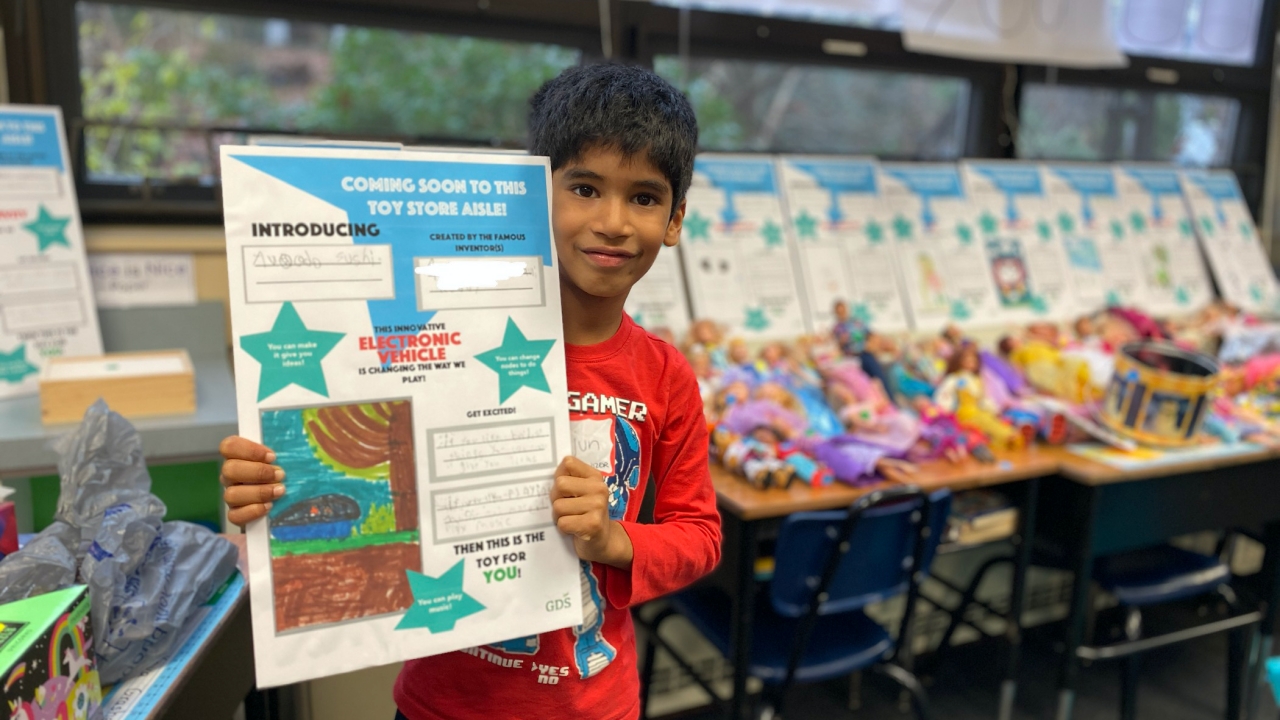You’ve heard it before: our world is changing rapidly and we have no idea what jobs will be available for our kids when they grow up. Or you’ve come across the concern, “we don’t know what problems the future will ask them to solve.” Short of being apocalyptic, there is some truth to these messages. Our children’s future is unknown and it’s almost impossible to guess with any real certainty what is coming. What, then, are we doing in the Lower School to get them ready for these unknowns? We’re preparing them to solve problems without answers by teaching them to have an innovative mindset.
The innovative mindset, put simply, is the process one goes through to create a new idea, product, or process—nothing more. We want our kids to look at the roadblocks they see and find a way around them. We want them to see a need and go through a thinking process to fix it. Developing an innovative mindset occurs in the rich experiences we give our students, which develop in them some key characteristics of innovation and GDS Student Will skill sets: creativity, empathy, and failure, among others. What do I mean? Let’s take a look at the GDS Lower School.
A good place to start is to look at how our teachers give our students more opportunities to explore a concept rather than regurgitate an answer, helping them to grow one of the key aspects of innovation: creativity. At GDS, prioritizing a rich experience is the difference between just learning to do math as a 2nd grader versus having a job in a gender neutral toy store where you need to calculate change for your parent patrons. It’s the difference between a fifth grader researching a social need in the world in order to write a report, or actually creating a fundraising effort to help end the injustice. It’s the difference between learning about an inventor and becoming one.
However, it’s not enough to develop creativity for creativity’s sake. GDS teachers focus on experiences where students serve each other and their broader community, since another key characteristic of innovation is empathy. Real-world solutions require a deep understanding of what the people being served actually need. By learning about their communities, students’ primary experiences take a back seat to the experiences and needs of others. Today’s designers constantly talk about creating more empathetic designs, meeting felt needs instead of just creating a flashy, but empty, product.
At GDS, developing empathy in our students is seen around the building. Jeremy Haft, our director of community engagement and experiential learning, often reminds us that learning starts with our hearts and passions, which builds in us the desire to learn more, which then leads to creating for others. Our 1st graders consider another’s needs first during their inventors’ curriculum, when they’re asked to develop a birthday present for a teacher after interviewing them and working with another student to brainstorm. In our 5th grade social entrepreneurship class, ChangeMakers, our students work in small groups and solve a problem in a way that helps others. They learn about a problem by connecting with subject matter experts and learning about how to reach their community through human-centered design. These experiences and selfless services are important pieces that grow the innovative mindset.
Although innovation is made up of many more characteristics, there is one more key quality that’s not nearly as celebrated as creativity or empathy: failure. As they innovate, students inevitably experience failure. Innovators seldom come upon their best solution on their first try; rather, they refine their solution through experimenting and trying again. Last year, when 4th graders were challenged to invent a way to foster collaboration in their grade, they got a chance to connect with and serve their smaller community, and many found that, though they did the assignment as asked, their ideas were not universally accepted. Setbacks like these help them realize that failure can mean that they just missed something and now have an opportunity to ask, “What was it?” Students gain valuable insights about life and problem solving as they fail, and oftentimes these insights only come through this kind of failure. Though sometimes difficult, these experiences are what make our creativity, empathy, and ultimately innovation so much richer.
GDS provides these and many other opportunities for students to build the skills of the innovative mindset. I realized while writing this that I could have written about how our school works to follow 21st Century learning principles, or point to how GDS strives to help our students think critically, but these words are overused in so many different contexts that they sometimes lose their impact. Instead, I want to leave you with the idea that innovation is more than a buzzword. It’s a mindset—that can be nurtured through real-life experiences—that we can create anywhere, including at home.
To get started, you can introduce your child to different experiences that broaden their view of how others go about their lives. While they are making sense of their experiences, engage them in making their thinking visible to you. Ask open-ended questions that give them an opportunity to retrace their thinking steps like, “Why did you think this instead of that?” or, “How did you make your decision?” These questions give them some practice making creative connections. In addition, allow your child to experience failure and find a way out of that failure themselves, deepening their learning and problem-solving process. Simple practices like these, in the midst of real life, hands-on experiences, encourage our students to be creative, empathetic problem solvers, ready to innovate for the present and the future.



